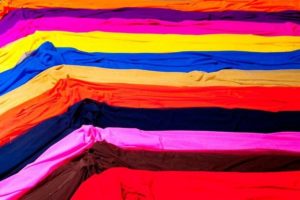 Lycra is a synthetic fiber made from a special polymer alloy. Such an alloy, which has the necessary properties, is created only in laboratory conditions. Lycra (another name is elastane) is a non-woven material. Externally, it stands out for its unusual thinness, which makes it almost transparent. The density of the material varies, but regardless of it, it stretches well and is very elastic.
Lycra is a synthetic fiber made from a special polymer alloy. Such an alloy, which has the necessary properties, is created only in laboratory conditions. Lycra (another name is elastane) is a non-woven material. Externally, it stands out for its unusual thinness, which makes it almost transparent. The density of the material varies, but regardless of it, it stretches well and is very elastic.
An unusual painting appeared in the mid-20th century. The spread of new synthetic fibers was rapid:
Although synthetic fibers were already known and used in industry, lycra opened up new possibilities for synthetics. Special methods of processing polyurethane (polyester) have made it possible to create fibers that are superior in their capabilities to nylon, lavsan and other synthetic fabrics.
Today, four methods are used to produce the popular synthetic material.
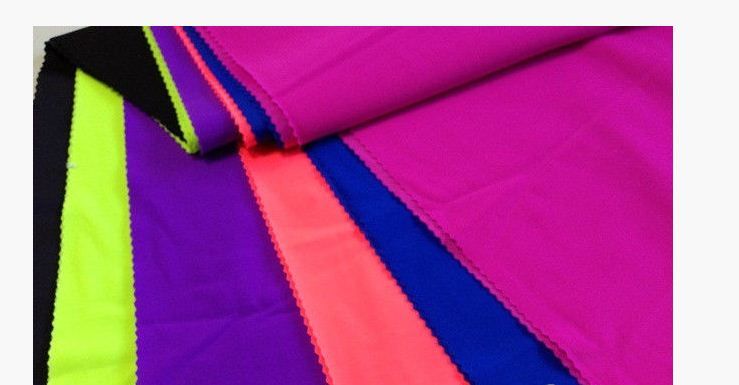
Wet method. In the wet version, polyurethane fibers are first treated with hot water (from +90° to +95°), then the wet fibers are wound onto a heat-resistant bobbin and sent to dry. The threads are dried at a high temperature (+120°), which is created by a heat chamber. Drying time – 72 hours.
Dry method. In the dry method, polyurethane fibers also undergo heat treatment in a special chamber. The difference from the wet version is that before winding onto bobbins they are treated with oil. Drying occurs faster (3 hours), drying temperature – 72°.
Reference! At present the dry method is the most economical, and the lycra thus obtained is inexpensive.
Chemical method. A chemical reaction is another way to produce elastane. Polyurethane in the form of a solution interacts with another substance - macrodisocyanate. The result of this interaction is the appearance of new fibers.
Extrusion. Elastic material is also made using the extrusion process. In this case, to form fibers, a viscous polyurethane mass is pressed through special holes.
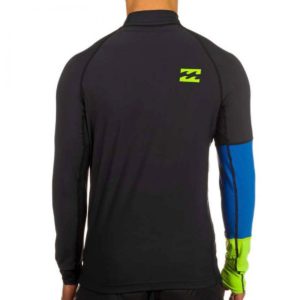 The fibers obtained as a result of any of these methods have the same qualities.
The fibers obtained as a result of any of these methods have the same qualities.
Elasticity. Lycra is superior to many synthetic fibers in its elasticity.
Reference! Elastane can stretch without tearing, increasing in size by 7-8 times.
What is important here is the ability of the fibers to return to their previous dimensions after stretching.
Thinness, lightness, density. Elastane fibers are very thin, several times thinner than a human hair, so the material is very light.This is confirmed by data on its density: 1 cm² of fibers - from 1.1 to 1.3 g.
Comfort. Elastane is a soft, delicate material that is pleasant to the touch. It allows air to pass through well, so the body can breathe.
Practicality. Elastane fibers do not get dirty: dirt particles remain on the surface and do not penetrate the structure of the threads, so they are easily removed. The material retains its color and quality without changing under the influence of sunlight, sea water or soap solutions.
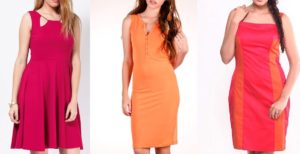 Elastane is used not only as an independent fabric. Most often, its fibers are combined with other threads. Thanks to the thinness of the synthetic additive, the main fabrics do not become thicker, while at the same time elastane optimizes their qualities and properties.
Elastane is used not only as an independent fabric. Most often, its fibers are combined with other threads. Thanks to the thinness of the synthetic additive, the main fabrics do not become thicker, while at the same time elastane optimizes their qualities and properties.
Reference! After adding lycra to the fabric, the shelf life of the material increases by 2 times.
Cotton. Elastane, combining with cotton, adds advantages and reduces disadvantages. Products made from such cotton wrinkle less, are easier to iron, retain their shape, and lycra prevents their deformation.
Footer. A new type of cotton fabric, footer has important qualities. It is light, soft, breathable, practical. Modern clothes for home and sports are often made from footer. Adding lycra to it makes the material denser, more resistant to puffs and snags. Elastane helps the footer retain its color and shape when washed.
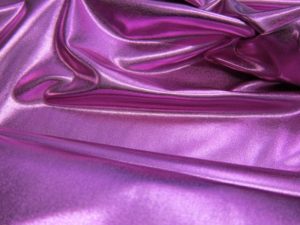 Ribana. A soft, light, delicate knitted fabric, ribana is used for sewing children's clothing and tracksuits. From lycra, knitwear becomes elastic, clothing stretches to the required size and fits the body.
Ribana. A soft, light, delicate knitted fabric, ribana is used for sewing children's clothing and tracksuits. From lycra, knitwear becomes elastic, clothing stretches to the required size and fits the body.
Reference! The maximum amount of lycra that is added to ribana is 5%.
Viscose. Artificial viscose fabric has the qualities of natural fabrics (cotton). Viscose absorbs water, “breathes,” soft and pleasant. Lycra helps viscose overcome its shortcomings. In combination with it, viscose gains strength and becomes elastic.
Reference! The minimum amount of lacra in viscose fabric is 5%. The increase in elastane affects the level of strength and elasticity of the fabric.
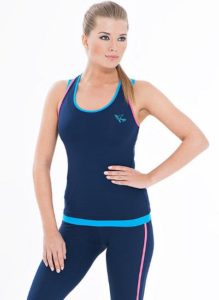 Since their inception, elastic fibers have been actively used in the manufacture of clothing and medical products. Their light and transparent material was originally made into stockings, socks and knee socks. Elastane has proven to be most suitable for tights, which add from 10% to 50% elastane. Thanks to its softness and strength, elastane has become one of the main linen fabrics. It is added in small quantities (from 2% to 5%) to suiting fabrics, outerwear materials, and in increased quantities to stretch fabrics.
Since their inception, elastic fibers have been actively used in the manufacture of clothing and medical products. Their light and transparent material was originally made into stockings, socks and knee socks. Elastane has proven to be most suitable for tights, which add from 10% to 50% elastane. Thanks to its softness and strength, elastane has become one of the main linen fabrics. It is added in small quantities (from 2% to 5%) to suiting fabrics, outerwear materials, and in increased quantities to stretch fabrics.
The stretchability of lycra has made it indispensable in the manufacture of tracksuits and swimsuits. Up to 30% elastane is added to sportswear fabrics.
Another area of its application was the production of medical goods. Bandages and corsets benefited from the elasticity and strength of the material.
Lycra Sport fabric is the result of the introduction of high technology into the textile industry.
Sports Lycra was developed specifically for athletes, therefore it combines all the advantages of elaston (lightness, strength, thinness, breathability, elasticity) with special requirements. Lecra Sport fits snugly around your muscles without being constrictive.The material has compression properties, evenly distributes pressure on the veins of the legs, and ensures the necessary blood circulation. The muscles are supported by Lycra, while the material does not constrain or interfere with movement.
Lycra is a modern high-tech material with a great future.